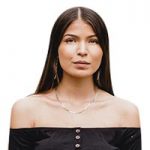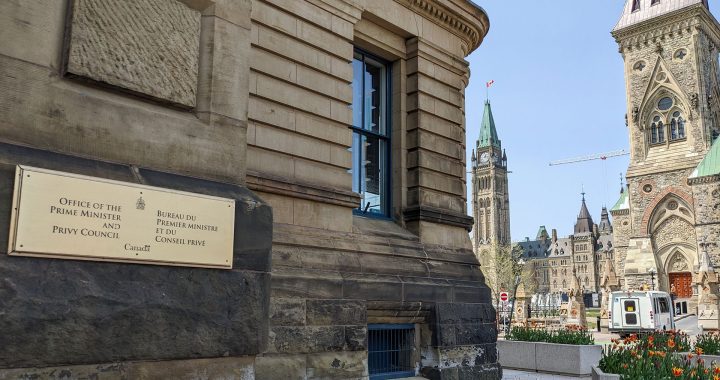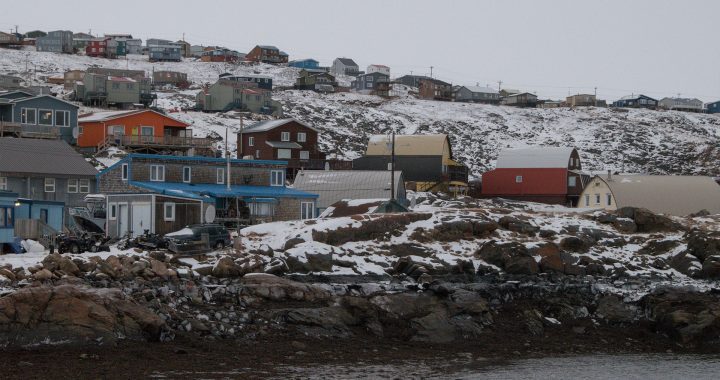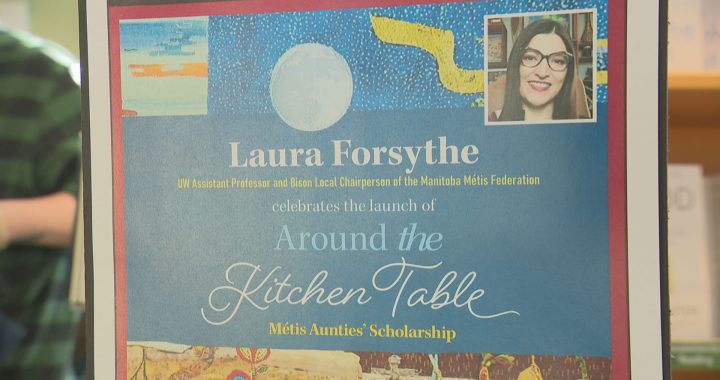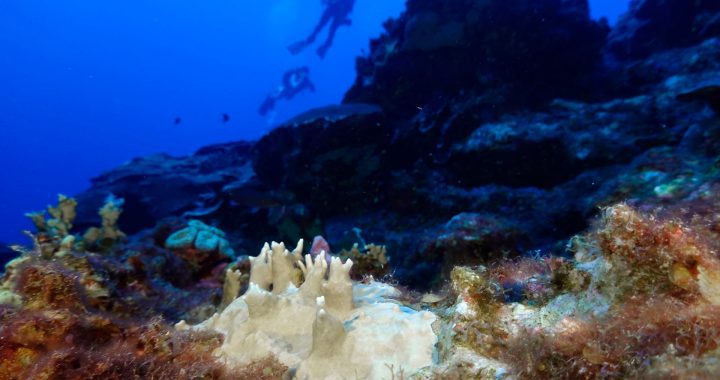
Herman Edward carved this canoe 20 years ago, and he still uses it in the annual border-crossing canoe paddle. Photo by Athena Bonneau/IndigiNews.
Herman Edward is preparing to paddle his dugout canoe across the constructed border between Canada and the United States for the 20th year in a row.
“I do this every year because I love it and if I don’t do this, this is going to die,” says Edward, who is a member of Lower Similkameen Indian Band.
He co-founded the “Sukʷnaqin Border Crossing Canoe Journey” — also known as the July 4 border-crossing paddle — in 2001, because he wanted to practice his ancestral and territorial rights to cross the border without interference, he tells IndigiNews.
On that first canoe journey, a group of paddlers travelled 311 kilometres through syilx territory from Inkumupulux (the head of the Okanagan Lake in nsyilxcən, the syilx language) in Vernon, B.C. to Brewster, Washington.
Edward recalls the group getting off to a “funny” start during that trip.
“We were flipping the canoe. We didn’t know how to steer. We didn’t know a thing about it, and we were going in circles,” he says.
Since that year, Edward says more than 150 Indigenous paddlers have participated in the annual journey. It usually starts on July 4, but was postponed this year out of respect for the mass grieving taking place in Indigenous communities.
“With the 215 children being found [at the former Kamloops Indian Residential “School”] we postponed it to a later date to honour them,” he says.
This year’s paddle will take place on Aug. 2. The group will spend one day travelling from the Nk’Mip Campground & RV Resort to the shoreline in Orville, Washington in syilx territory.
“Because of COVID, I don’t think we’re going to be landing, but we’re going to go near the shore and come back,” he explains.
‘This was one of our ways of living’
Edward says that Louise Gabriel — a respected elder in the Okanagan Nation — envisioned the border-crossing canoe journey as a way to help and unite people.
“Before this all happened, the bands didn’t really get along and didn’t really know each other,” Edward says. “Now we’re doing language and other things, starting to get to know our other communities.”
Traditionally, the border between Canada and the U.S. didn’t exist for Indigenous people and when constructed, many nations were split, families and communities separated.
The syilx/Okanagan Nation’s territory extends from north of Vernon, B.C. down to Colville, Washington in the U.S., according to Edward.
“Our people used to come from all the way down from Head of the Lake to cross the border on canoes and they would have their big trade,” Edward says.
“I used to hear stories about how our people would spear fish right off the canoes,” says Edward. Photo by Athena Bonneau.
In 1794, representatives from the U.S. and Britain signed the Treaty of Amity, Commerce, and Navigation — the Jay Treaty — which allows Indigenous people to cross the international border and excludes them from paying duty on goods they’re carrying.
Edward wants to exercise his right to cross the water by canoe, instead of just by land, by continuing to cross the border without showing his identity card (ID) every time.
“I want to exercise my right of not having to show my ID when I get to shore,” he says. “It’s like you’re condoning asking permission to land on your own shores.
‘If I don’t do this, this is going to die’

Edward says he began learning how to carve canoes in 2000 with his three mentors: the late Gordon Marchand, the late Richard Louis Sr and Mervin Louis— who all participated in the first border-crossing journey alongside Edward.
“When Gordy taught us how to make a canoe, I didn’t know what I was getting myself into,” he says.
Edward remembers, at the time, not having the financial resources to buy a canoe and feeling shocked to find out he was going to build a canoe for the first time with his mentors.
“I was really determined to learn. I wanted to learn how to make them because I always admired canoes, and I pray on the water,” he says.
“When you pray on the water, you’re praying on something that feeds the land and that’s the syilx way. Without water, we would not exist, nor would the animals or the plants, the shrubs, everything that grows on the land. ”
After 20 years of carving dugout canoes, Edward still doesn’t consider himself a master carver.
“I still consider myself a student. I became a carver after a few years working with them. These guys are my teachers, I learned a lot from them, and I’m still learning,” he says.
“This is something our young men should be learning,” says Edward. Photo by Athena Bonneau.
Edward says the process of carving a dugout canoe is part of his healing.
“I’d done a lot of healing through this because I was 16 when my dad passed away and I didn’t know how to be a man — I didn’t know how to be a good man,” he says.
Edward has been maintaining the original build of the dugout canoes in honour of his mentor, and they still use it today because the water is “a sacred place,” he says.
On Aug. 1, Edward, the Okanagan Nation Alliance, the South Okanagan Restorative Justice Program and the Nk’Mip RV & Campground are hosting an event to honour the four main carvers who started the annual canoe journey and who have continued to breathe life into it.
“I’ve been repairing these canoes to keep them afloat,” he says. “If I didn’t care about these canoes, they would have rotted a very long time ago, but I do care for the canoes and I clean them up every year.”




